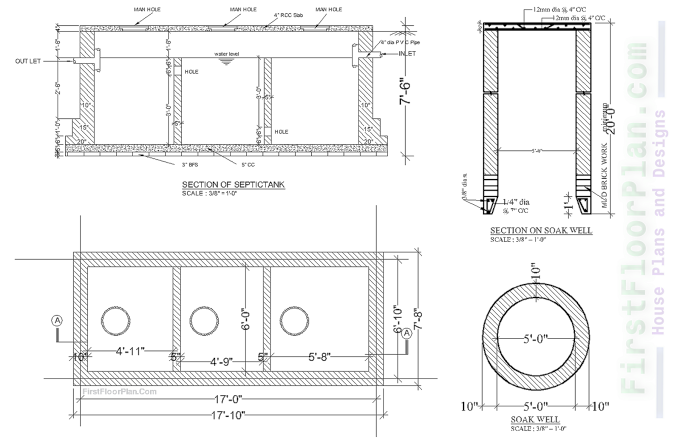There isn't a moment to spare in the development business. Every moment that ticks by can mean the difference between a project that is delivered on schedule and one that is plagued by costly delays. In this highly competitive industry, the ability to complete projects efficiently is crucial for survival.
But how can construction companies identify inefficiencies and areas for improvement in their operations? The answer lies in time studies. Also known as work measurement or time and motion studies, time studies provide a systematic way to observe and measure the time required for specific tasks, allowing construction companies to optimize their workflows, enhance productivity, and deliver projects on time and within budget.
This article will explore the basics of time studies in the context of construction, highlighting the steps involved, the benefits, and providing real-world examples of their successful implementation. By understanding and harnessing the power of time studies, construction companies can gain a competitive edge, reduce costs, and achieve operational excellence.
Introduction to Time Studies
Time studies, also known as work measurement or time and motion studies, are systematic observations and measurements of the time required to perform specific tasks or activities. In the context of construction, time studies involve analyzing the time spent on various construction activities, such as excavation, foundation work, framing, electrical installations, and finishing. The goal is to identify areas where time can be saved, eliminate unnecessary steps or processes, and optimize the overall workflow.
Time studies typically involve the following steps:
- Identifying the tasks or activities to be studied.
- Analyzing the data to identify patterns, bottlenecks, and areas for improvement.
- Developing and implementing strategies to optimize time usage.
- Monitoring and evaluating the effectiveness of the implemented changes.
By conducting time studies, construction companies can gain valuable insights into their operations and make data-driven decisions to improve efficiency and productivity.
The Benefits of Time Studies in Construction
Time studies offer several benefits to construction companies, including:
1. Improved Planning and Scheduling
Time studies provide accurate data on the time required to complete specific tasks or activities. This data can be used to create more realistic project schedules and allocate resources more effectively. By having a clear understanding of the time needed for each task, construction companies can avoid overcommitting or underestimating project timelines, leading to improved planning and scheduling.
2. Enhanced Productivity
By analyzing the time spent on various tasks, construction companies can identify inefficiencies and bottlenecks in their workflow. This allows them to implement strategies to eliminate or reduce these inefficiencies, leading to improved productivity. For example, if a time study reveals that a particular task takes longer than expected due to poor equipment availability, the company can invest in additional equipment or improve maintenance procedures to minimize downtime and increase productivity.
3. Cost Savings
Time studies can help construction companies identify areas where time and resources are being wasted. By eliminating unnecessary steps or processes, streamlining workflows, and optimizing resource allocation, companies can reduce costs and increase profitability. For example, if a time study reveals that a certain task requires excessive manpower, the company can explore automation or alternative methods to reduce labor costs.
4. Quality Control
Time studies can also contribute to quality control in construction projects. By analyzing the time spent on each task, companies can identify potential areas where quality may be compromised due to rushed work or inadequate resources. This allows them to take corrective measures to ensure that quality standards are met or exceeded.
5. Benchmarking and Continuous Improvement
Time studies provide a baseline for benchmarking and continuous improvement. By measuring and analyzing the time spent on various tasks, construction companies can set performance benchmarks and track their progress over time. This allows them to identify areas where they are falling behind or excelling and implement strategies for continuous improvement. For example, if a time study reveals that a certain task takes longer than industry standards, the company can analyze the reasons behind the delay and implement measures to bring it in line with industry norms.
Real-World Examples of Time Studies in Construction
Time studies have been successfully implemented in various construction projects around the world. Here are a few examples:
Example 1: High-Rise Construction
In a high-rise construction project, a time study was conducted to analyze the time spent on concrete pouring for each floor. The study revealed that the time taken for concrete pouring decreased as the project progressed. This was attributed to the learning curve effect, where the construction crew became more efficient and experienced with each floor. The data from the time study allowed the project managers to adjust the project schedule and allocate resources more effectively, resulting in improved overall efficiency.
Example 2: Road Construction
In a road construction project, a time study was conducted to analyze the time spent on different stages of the construction process, such as excavation, paving, and striping. The study revealed that the majority of the time was spent on excavation due to the presence of unexpected underground utilities. Based on this data, the construction company implemented measures to improve utility detection and relocation procedures, resulting in significant time savings and improved project efficiency.
Example 3: Residential Construction
In a residential construction project, a time study was conducted to analyze the time spent on various finishing tasks, such as painting, flooring, and installation of fixtures. The study revealed that the time taken for painting was significantly higher than expected due to poor coordination between different trades. Based on this data, the construction company implemented measures to improve communication and coordination between trades, resulting in reduced project delays and improved overall efficiency.
Conclusion
In conclusion, time studies have proven to be an invaluable tool for construction companies seeking to enhance efficiency, productivity, and quality control. By systematically observing and measuring the time required for specific tasks, construction managers can identify bottlenecks, inefficiencies, and areas for improvement. The insights gained from time studies allow companies to optimize resource allocation, streamline workflows, and ultimately, improve project outcomes. As illustrated by real-world examples, time studies have helped construction projects adapt to unexpected challenges, learn from experience, and improve coordination among trades. In an industry where time is money, leveraging the power of time studies is essential for achieving
competitive advantage, reducing costs, and delivering high-quality projects on schedule. With the benefits of improved planning, enhanced productivity, cost savings, quality control, and continuous improvement, time studies are a vital tool that every construction company should consider incorporating into their operations.










%20House%20plan%20with%207%20storey%20Apartmen%20building%20Structural%20desing%20%20DWG%20&%20PDF.jpg)

